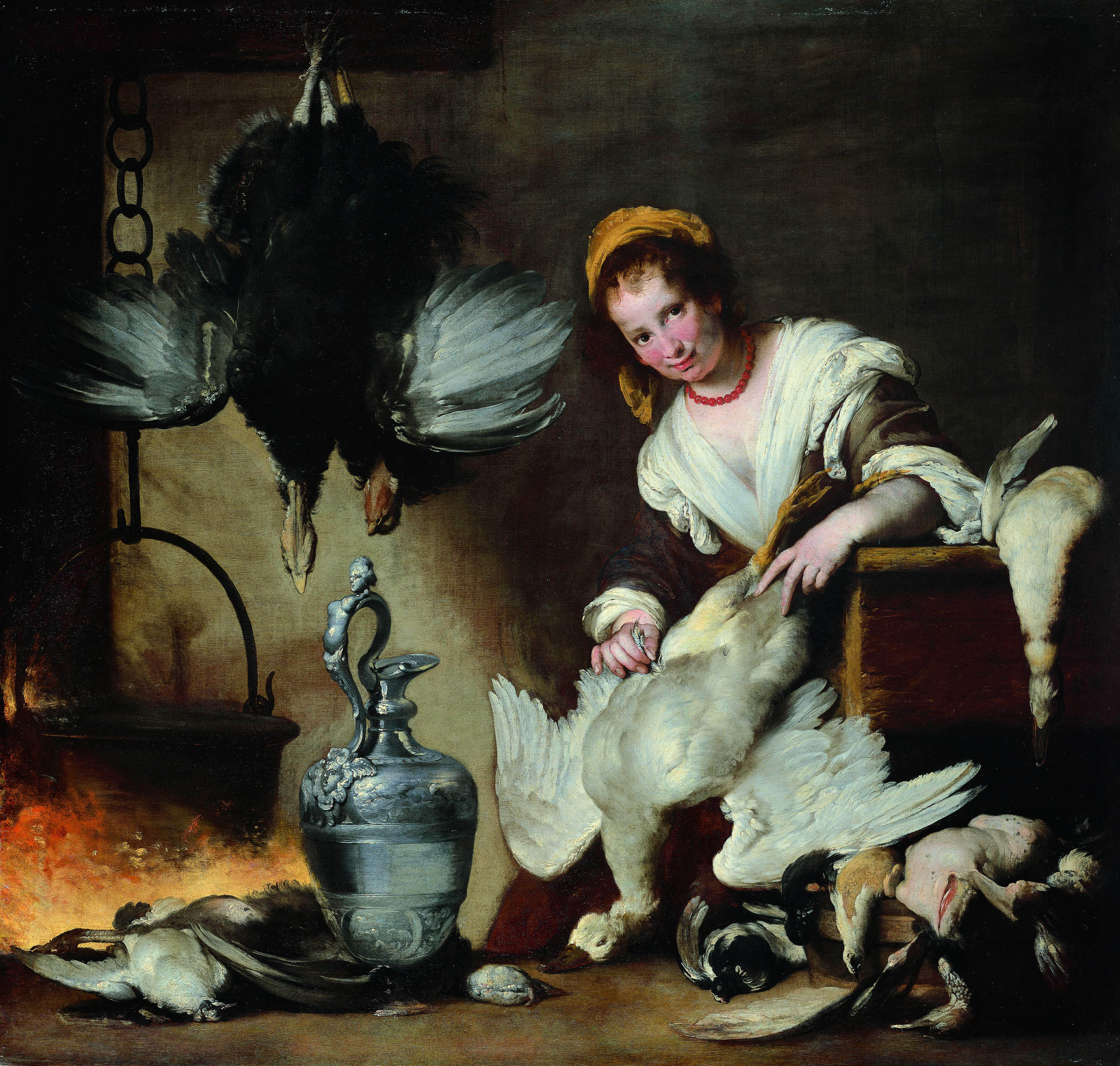
Click here to view image
The cook
Maria Brignole-Sale De Ferrari 1874 Genova - donazione
Strozzi, Bernardo
painting
1625 - 1625 - XVII
PR 20
Unità di misura: cm; Altezza: 176; Larghezza: 185
olio su tela
Pittori genovesi a Genova nel '600 e nel '700 - Genova - 1969<br>Bernardo Strozzi - Genova - 1995<br>La cucina italiana. Cuoche a confronto - Genova - 2015
Certainly one of the best-known works in the Strada Nuova Museums and in 17th-century Genoese painting itself, this canvas, internationally known as Strozzi's “La cuoca” (The Cook), depicts a kitchen maid plucking a goose among chickens and pigeons, with a turkey hanging behind her, in the kitchen of a 17th-century Genoese aristocratic residence. In fact, among local noble families at the time, the profession of cook was reserved exclusively for men, while women could only perform more menial tasks, such as plucking poultry. That this is an aristocratic residence is certain, given the presence in the foreground of a rich embossed silver basin with an elaborate handle depicting a female bust. The painting is mentioned for the first time in the 1683-84 inventory of Gio. Francesco I Brignole Sale, who commissioned the Palazzo Rosso residence. From the second decade of the 18th century, however, and at least until 1774, the work is always mentioned in inventories and guides in the family villa on the hill of Albaro (now the Marcelline Institute). it is very likely that this less prestigious location was motivated by the everyday subject matter of the painting, which was probably considered unsuitable for the decorum of the city palace, whose picture gallery had been enriched between the end of the 17th and the beginning of the 18th century with paintings of historical subjects or sacred iconography. The work by Strozzi - referred to in documents of the time as “il Cappuccino” because he entered the Order as a friar at the age of seventeen - is an admirable synthesis of the various influences that made up the fabric of local painting in the early decades of the 17th century: on the one hand, the Flemish fashion for depictions of “kitchens”, “markets” and “pantries”, which had already found examples in the mid-16th century in paintings by artists such as Aertsen and Beuckelaer, documented in the collections of Genoese families (two panels by these artists are now in Palazzo Bianco); on the other hand, the new attention to the genre of “still life”, due to the presence in the city of painters, still coming from Flanders, such as Jan Roos and Giacomo Liegi; finally, the first emergence of Caravaggio-inspired naturalism, which constituted the other pole of renewal in the local school. This canvas, dating from around 1625, is an example of the painter's best qualities: textured brushwork, “tasteful and suave...manipulation of colours”, “rich and robust colours”, as the sources write. From an iconographic point of view, there is a clear desire to measure oneself against the representation of popular subjects, showing an adherence to reality still unknown to Genoese painters, and singular if we consider this choice on the part of a religious figure; however, it cannot be ruled out that beyond this immediate meaning, other symbolic contents may be hidden in the painting, perhaps - as has been suggested - an allegory of the four elements, alluded to by the birds for “air”, the elaborate stagnara for “water”, the “cook” for “earth”, and “fire”, which the painter depicts with great skill crackling under the pot. Boccardo (La cucina italiana. Cuoche a confronto, 2015) hypothesises that the work was commissioned by Gio. Carlo Doria at the end of 1625; when the commissioner died that same year, the canvas then entered the Brignole-Sale collections. The painting depicts a cook plucking some animals.




